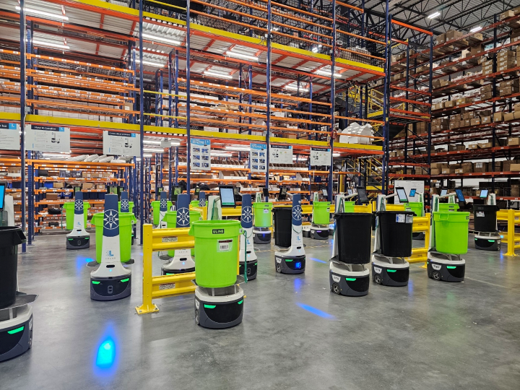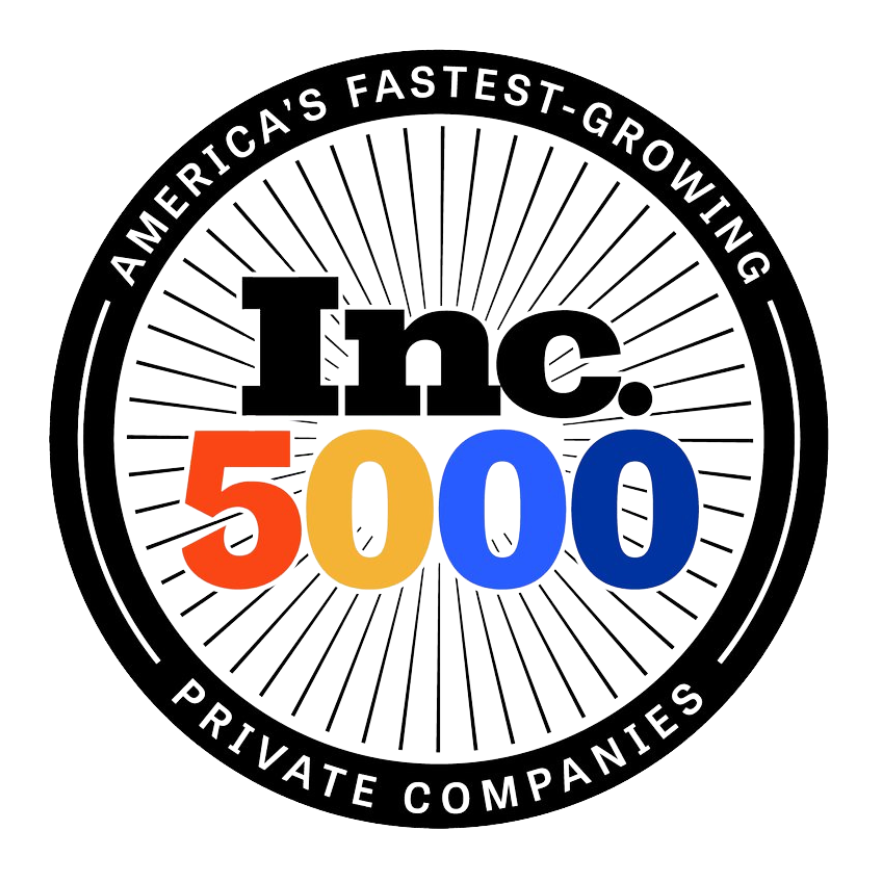The ������APP Blog
The latest news, trends, and insights in supply chain logistics from ������APP's own team of subject matter experts.

By Katherine Wroth
•
April 1, 2025
Budgets are tight. Inflation and consumer expectations are rising. And the e-commerce space is oversaturated. At ������APP Distribution Centers, w e understand the complexity of scaling your business. Whether you're managing B2B and DTC fulfillment, expanding into new channels or trying to meet next-day delivery expectations without draining your budget, we’re here to help. Here are eight of the most common logistics challenges brands face and how ������APP helps solve them. 1. Implementing Modern E-Commerce Strategies Growth strategies like bundling, upselling, order consolidation, pre-orders and personalized delivery options require operational flexibility and the right systems to execute. Legacy systems can slow brands down or block these strategies altogether. ������APP offers modern fulfillment solutions supported by integrated systems that enable operational agility. Our technology and processes are designed to help brands turn strategy into execution without adding complexity. 2. Expanding Sales Channels Without Adding Chaos As brands expand into retail, marketplaces and new DTC platforms, the backend operations can quickly become overwhelming. Overselling, underselling and inconsistent customer experiences can wear down trust and revenue. ������APP helps you grow across channels with confidence. Our systems support multichannel inventory management, centralized order routing and scalable fulfillment that adapts to the specific needs of each sales channel. 3. Choosing a 3PL That Grows With You Too often, brands outpace their 3PL provider. As demand grows and needs evolve, having the wrong partner can limit scalability and compromise customer experience. ������APP supports both DTC and B2B fulfillment with a unified solution. Whether you’re shipping to a consumer’s doorstep or replenishing inventory for a major retail partner, our nationwide network and customized approach ensure we scale with you. 4. Adapting to Economic Pressures Economic shifts and uncertainty pressure consumer behavior, supply chain costs and your bottom line. Operational efficiency and adaptability have become key to staying ahead. ������APP helps brands offset these pressures by optimizing fulfillment networks, reducing time in transit and streamlining inventory placement—all while delivering an excellent customer experience. 5. Scaling in a Cost-Conscious Environment Rising transportation, labor and warehouse costs can quickly eat into profitability. Growth needs to be smart not just fast. ������APP’s strategic inventory placement and network optimization help reduce shipping zones and transportation costs. We provide tools and insights that help you plan smarter, forecast more accurately and avoid costly inefficiencies. 6. Staying Agile in an Ever-Changing Market Your fulfillment operations must be responsive and agile, from seasonal surges to supply chain disruptions. ������APP’s flexible infrastructure allows you to ramp up, scale down and shift priorities quickly. We work closely with you to ensure your supply chain can flex with changing conditions without disrupting your customer experience. 7. Managing Capital and Inventory Smarter Growth capital is harder to access and many brands are rethinking how they manage working capital and inventory risk. Overstocking, long lead times and slow-moving inventory can limit your ability to invest where it matters. ������APP’s demand-driven fulfillment approach reduces unnecessary holding costs and frees up working capital. We help brands align inventory with demand so resources are available to drive growth rather than sitting on the shelf. 8. Delivering a Consumer Experience That Builds Loyalty At the end of the day, consumers expect fast, accurate and seamless experiences. A missed delivery or poor post-purchase experience can cost more than just a refund—it can cost loyalty. ������APP is built around delivering that high-touch experience. With best-in-class DTC fulfillment, responsive communication, real-time visibility and post-purchase support, we help our brand partners exceed consumer expectations every time. What You Can Do Now E-commerce and omnichannel brands can take action today by aligning the right strategies, technology and partners. That means: Implementing fulfillment strategies that support bundled orders, subscriptions or personalization Expanding into new sales channels without operational risk Optimizing inventory placement across fulfillment nodes Choosing a 3PL partner like ������APP with proven retail and DTC experience Leveraging data and forecasting tools to reduce risk and improve planning Why Brands Choose ������APP ������APP Distribution Centers powers high-growth consumer brands across apparel, health and beauty, home goods, specialty retail and more. With 20+ strategically located fulfillment centers across the U.S., we deliver fast, reliable service and scalable solutions tailored to your business. We are proud to support innovative brands through every stage of growth—from startup to enterprise. Are you looking for your forever 3PL? Contact us now to learn more about how ������APP can support your next phase of growth.
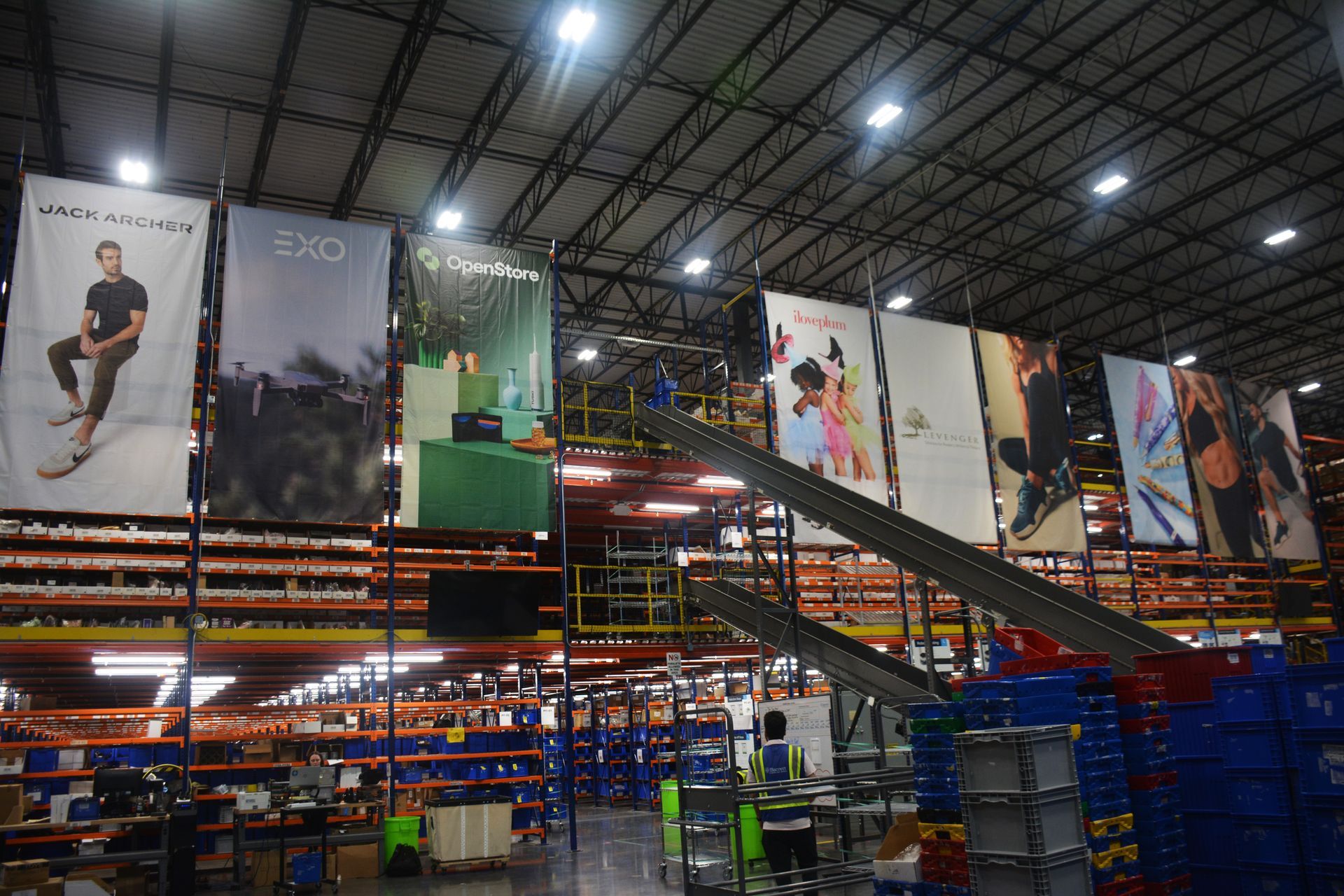
By Katherine Wroth
•
April 1, 2025
When was the last time you visited your fulfillment center? As e-commerce, omnichannel and B2B logistics become increasingly complex, building a strong relationship with your 3PL partner goes beyond Zoom calls and dashboards. Visiting your fulfillment partner in person can reveal more than a report ever could. At ������APP Distibution, we believe that trust, transparency and collaboration start on the warehouse floor. Here are five reasons why you should plan that visit: 1. See Your Brand in Action Walking the floor where your orders are picked, packed and shipped gives you an unmatched perspective. You’ll see how your product is handled, how your packaging is displayed and how your brand comes to life with every outbound box. It’s a great way to ensure your fulfillment strategy is aligned with your brand identity. 2. Build Stronger Relationships Meeting the team face-to-face builds trust and opens communication. You’re not just another SKU to us — you’re a partner. A visit allows you to connect with the operations team, ask questions and better understand the people powering your logistics daily. 3. Spot Opportunities for Efficiency Seeing the operation firsthand often reveals opportunities that aren’t visible on paper. Optimizing SKU locations, adjusting kitting processes, rethinking packaging materials and touring the facility with your account team can spark ideas to improve speed, accuracy and cost efficiency. 4. Gain Clarity on Performance Metrics Numbers are important — but context matters. A warehouse visit helps you better understand the "why" behind your KPIs. Whether digging into order accuracy or exploring dock-to-stock times, seeing processes live gives you the clarity you can’t get from a dashboard alone. 5. Collaborate on the Future Your business is growing. Your fulfillment partner should grow with you. In-person visits open the door to strategic planning: peak season prep, expansion into new channels or launching new product lines. You can brainstorm in real time and leave with an action plan when you're onsite. At ������APP, we welcome our clients to visit any time. Our goal is to be more than a provider — we aim to be your forever 3PL. Whether it’s your first visit or your fiftieth, there’s always value in walking the floor, asking questions and having conversations that drive results. Want to schedule a visit to one of our fulfillment centers? Contact us today to make it happen. We’ll have the coffee ready.
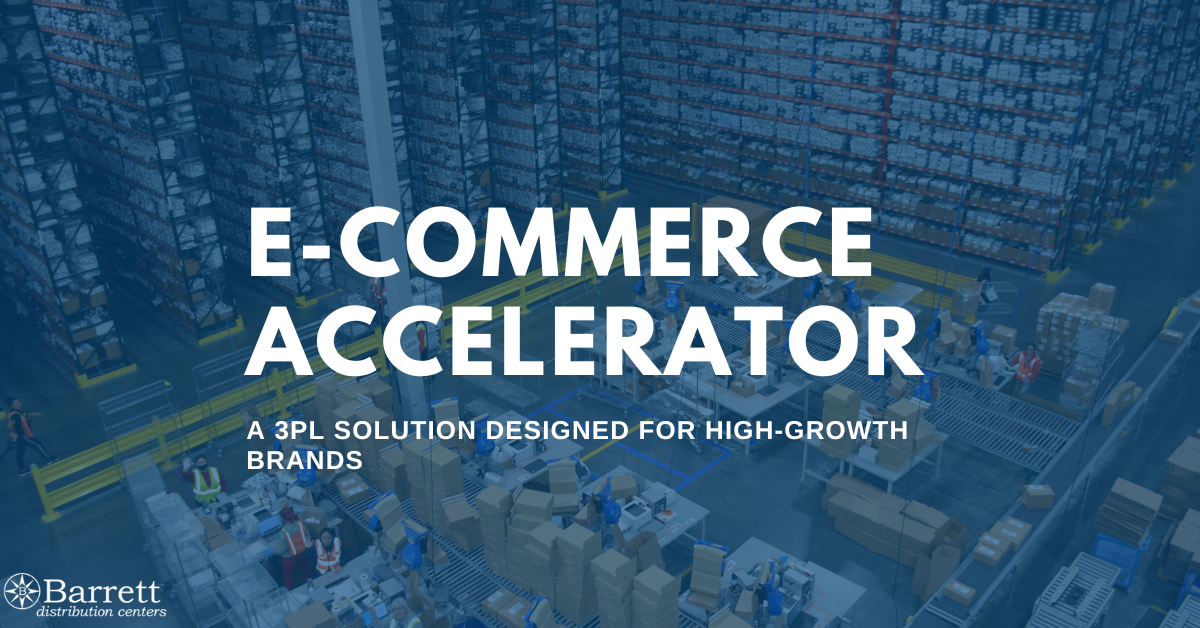
By Katherine Wroth
•
March 26, 2025
Franklin, MA, March 26, 2025— ������APP Distribution Centers , a trusted leader in third-party logistics for e-commerce and omnichannel fulfillment, announces the launch of its E-commerce Accelerator, a program designed to help high-growth, early-stage brands scale their logistics operations efficiently. A Permanent Home for Growing Brands Unlike traditional 3PL solutions, the E-commerce Accelerator offers a low-risk, one-year contract model, allowing brands to integrate seamlessly into ������APP’s nationwide logistics network. Focusing on flexibility, efficiency, and long-term partnership, the program eliminates the costly and disruptive process of switching 3PL providers as businesses grow. “Growth is in ������APP’s DNA. As a 15-time honoree on the Inc. 5000 fastest-growing companies list, we know what it takes to scale,” said Adam Robertson , Vice President of Customer Experience at ������APP Distribution. “We have helped brands evolve from early-stage e-commerce to full omnichannel operations. The E-commerce Accelerator is our way of providing a permanent 3PL home for startups by offering the infrastructure and expertise to grow without limits.” Key Benefits of the E-commerce Accelerator Participants in the program gain access to ������APP’s logistics expertise, including: Seamless Fulfillment – Nationwide fulfillment solutions designed to scale. Easy Integration – Streamlined onboarding and system connectivity to quickly get brands up and running. Inventory Management – Real-time inventory tracking for operational efficiency. Reverse Logistics – Hassle-free returns management to enhance customer satisfaction. Personalization & Customization – Tailored solutions to meet brand-specific needs. Coast-to-Coast Infrastructure – A robust network of strategically located facilities. A Commitment to Entrepreneurial Success ������APP’s core value of ownership—empowering employees to think and act like business owners—extends to the E-commerce Accelerator, fostering strong relationships with entrepreneurial brands. The program aligns with ������APP’s deep-rooted belief in supporting high-growth companies that share its commitment to innovation and scalability. "We thrive on working with brands that are hungry to grow," said Harrison Smith , Director of 3PL Pricing at ������APP Distribution. "Partnering with ambitious entrepreneurs makes our work incredibly rewarding. Their passion drives our commitment to providing the best logistics solutions possible. The E-commerce Accelerator is not just about fulfillment—it is about building long-term partnerships that support brands at every stage of their journey." About ������APP Distribution Centers Since 1941, ������APP has provided customized third-party logistics (3PL), direct-to-consumer (DTC) eCommerce fulfillment, omnichannel distribution, managed transportation solutions and retail compliance for clients across all industries, with a focus on apparel & footwear, health & beauty, consumer packaged goods (CPG) and education. ������APP continues to be a leading 3rd party logistics provider in North America, known for superior execution, customer engagement, and direct access to senior leadership decision-makers. As a member of Inc.'s fastest-growing companies list 15 times, ������APP is big enough to do the job and still small enough to deeply care about your business. eCommerce brands interested in a new 3PL partnership may contact ������APP directly here . Contact Information Katherine Wroth Marketing Manager katherine.wroth@barrettdistribution.com Official Release Here

By Katherine Wroth
•
March 19, 2025
Retailers and brands are using this one strategy to boost customer retention—are you? Kitting goes beyond bundling products. It’s about crafting curated experiences that delight customers, just like opening the perfect gift on Christmas morning. Whether it’s a fitness starter bundle or a self-care collection, kitting has evolved into a valuable way for brands to create engaging, convenient shopping experiences that drive loyalty and revenue. But what makes kitting such a game-changer? Picture a customer unboxing a wellness kit complete with everything needed for a cozy winter reset or a fitness enthusiast receiving a perfectly assembled set of gear to jumpstart their training—all without having to shop for each piece separately. This blend of smart product selection and efficient packaging allows businesses to enhance customer satisfaction, boost sales and strengthen brand identity. Understanding Kitting At its core, kitting combines multiple products into a single packaged offering, creating a cohesive experience for the consumer. These bundles range from simple pairings of complementary items to elaborate themed collections designed to tell a story or highlight exclusive collaborations. In retail and e-commerce, kitting is a strategic tool for increasing perceived value, differentiating from competitors and delivering a memorable shopping experience. Different Approaches to Kitting Kitting can be executed in several ways, each catering to different business needs and operational structures. Let’s break down the four most common methods: 1. Manufacturer-Level Kitting In this approach, product assembly takes place at the manufacturing stage. This means products are bundled before they even reach distribution, streamlining logistics and reducing handling costs. It’s an efficient method that simplifies inventory management and ensures consistency. However, it does come with challenges. Pre-assembled kits can limit customization, increase storage costs and require precise forecasting to avoid excess stock. Managing returns also becomes more complex since individual items within a kit may not be sold separately. Additionally, manufacturers must have the capability and expertise to execute kitting effectively. 2. Retailer-Controlled Kitting Retailers can take kitting into their own hands, assembling product bundles closer to the point of sale. This allows them to tailor kits to customer preferences, seasonal trends and regional demands, offering greater flexibility than manufacturer-driven kitting. For instance, a beauty retailer might combine a cleanser, toner and moisturizer into a skincare set, providing a complete solution for customers. This level of customization enhances the shopping experience and can encourage repeat purchases. However, in-house kitting at the retail level comes with operational hurdles. Additional labor, warehouse space and training are required to ensure consistency and quality. Inventory management also becomes more complex as missing just one product can disrupt the availability of an entire kit. 3. Outsourced Kitting (Third-Party Providers) Third-party kitting providers offer a solution for businesses that want to leverage kitting without the overhead of assembling kits themselves. These specialists handle the entire process, from product bundling to packaging, allowing brands to focus on marketing and sales. Outsourcing can be especially beneficial for regulated industries such as pharmaceuticals or health supplements where strict compliance is required. These providers bring expertise and efficiency to the table, often using advanced technology for precision assembly. However, outsourcing can have downsides. Businesses lose some control over quality assurance and added service fees may impact profit margins. Additionally, extended lead times for kit modifications can reduce a brand’s ability to respond quickly to market trends. 4. In-House Kitting (Self-Managed by Brands) Some companies keep kitting in-house, giving them complete control over the process. This approach is common among startups or fully integrated corporations that manage their entire supply chain. Handling kitting internally might seem cost-effective for smaller brands, but it often leads to operational strain. Kits can be assembled inefficiently without the right systems, expertise and scalability. On the other hand, larger brands with extensive infrastructure can justify in-house kitting as they have the volume and resources to sustain it at scale. The Best of Both Worlds: Kitting Through a Fulfillment Partner A lesser-known but highly effective approach is leveraging a fulfillment provider specializing in kitting. This method offers a balance of flexibility, efficiency and cost savings. Here’s why it works: Reduced logistics costs: Since products are already at the fulfillment center, there’s no need for additional transportation or production delays. On-demand customization: Businesses can choose between made-to-order kits, pre-assembled bundles or hybrid approaches. Improved inventory management: By integrating kitting with fulfillment, stock levels are optimized to prevent shortages and ensure consistent availability. Expert execution: Fulfillment providers with kitting capabilities often have dedicated teams that optimize packaging, reduce labor costs and ensure quality control. This approach eliminates many of the pitfalls of the other methods while maximizing flexibility, cost efficiency and speed to market. Why Kitting is a Competitive Advantage Kitting is a powerful strategy for brands looking to expand their product offerings, increase sales and enhance customer satisfaction. It encourages product discovery, creates compelling promotional opportunities and strengthens brand perception through thoughtfully curated collections. Let’s Build Something Better Together Looking to streamline your kitting process and create standout product bundles? We can help you maximize efficiency, reduce costs and deliver an exceptional customer experience. Contact us today for a complimentary supply chain consultation.
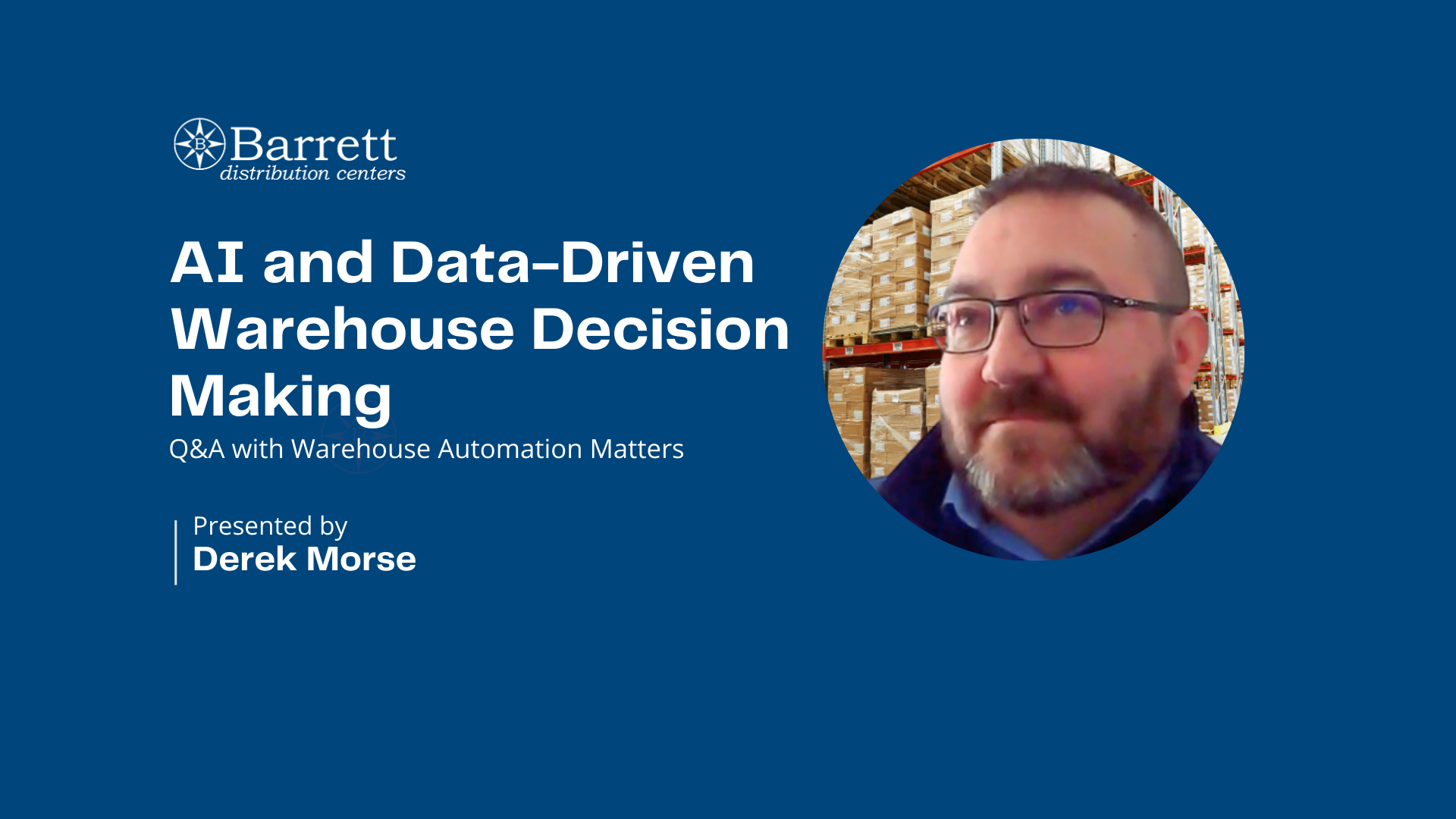
By Katherine Wroth
•
March 13, 2025
The role of analytics in warehousing has transformed significantly over the years. What was once a manual data collection process has evolved into a sophisticated, data-driven industry. In a recent episode of Warehouse Automation Matters, host Mary Hart sat down with Derek Morse, Senior Director of Operational Excellence at ������APP Distribution Centers, to discuss how analytics shapes modern warehousing and why leveraging data is critical for efficiency and cost reduction. The Evolution of Analytics in Warehousing Derek, who has a rich background in logistics, including roles at FedEx, JCPenney, and Quiet Logistics, noted that analytics has drastically improved warehouse operations. He emphasized that tracking key performance indicators (KPIs) allows warehouses to enhance speed, accuracy, and cost efficiency, helping companies like ������APP stay competitive in an ever-evolving fulfillment landscape. Key Metrics That Matter When asked about the most important data points warehouse leaders should monitor, Derek pointed out that while every business has different needs, common KPIs include: Dock-to-stock time Time to fill Fulfillment rates Net and gross accuracy Cost per unit At ������APP, specific metrics like LP accuracy (location precision) and transaction adjustment percentage serve as quick indicators of facility health. Turning Data into Action A prime example of ������APP’s data-driven approach is its focus on skip picks—instances where a picker bypasses an item. Analyzing this metric helps identify root causes such as incorrect replenishment timing, equipment issues, or improper slotting. By optimizing these factors, ������APP has significantly improved productivity and reduced costs. The Role of Technology in Data Collection Derek highlighted the importance of integrating technology into warehouse operations. Businesses employ a variety of tools depending on their scale and needs, including: Warehouse Management Systems (WMS) RFID tracking Robotics Advanced analytics platforms These technologies provide real-time insights and enhance overall operational efficiency. Optimizing Inventory Placement with Data Slotting strategies, which determine where products are stored within a warehouse, play a crucial role in efficiency. By analyzing factors like product demand, order frequency, and warehouse layout , ������APP ensures high-demand products are placed in the “golden zone” for faster picking, reduced labor, and improved space utilization. Addressing Overstock and Stockouts Managing stock levels effectively is a challenge for any warehouse. Derek explained that data analytics enables proactive inventory management by predicting demand fluctuations and ensuring products are in the right picking zones. This minimizes bending, unnecessary equipment usage, and most importantly, stockouts. Challenges in Adopting a Data-Driven Approach Implementing a data-driven strategy comes with its challenges, including: Resistance to change Data quality issues Cost constraints To overcome these hurdles, Derek advised businesses to collaborate, conduct thorough research, and select scalable systems that align with long-term objectives. Advice for Warehouse Leaders For those looking to enhance their analytics strategy, Derek recommended: Identify the most impactful areas – Focus on high-labor tasks like outbound processing. Ensure high-quality data – Reliable, consistent data is key. Invest in scalable tools – The right platform should support future growth. Foster a data-driven culture – Strong communication and team buy-in are essential for success. The Future of Warehousing: AI and Machine Learning Emerging trends such as AI and machine learning are reshaping warehouse operations. While companies are still in the discovery phase, these technologies promise more intelligent, responsive, and efficient systems , providing businesses with a competitive edge. Balancing Automation and Human Expertise While automation and AI can handle repetitive tasks, human decision-making remains essential for flexible task management, ethical considerations, and creative problem-solving. Derek believes collaboration between technology and human expertise results in more adaptive and efficient warehouse operations. Why Choose ������APP Distribution Centers? When asked why businesses should partner with ������APP, Derek summed it up: trust and people. ������APP places the right people in key roles and prioritizes client satisfaction. Get in Touch with ������APP Distribution Centers Are you looking for a trusted 3PL partner? Contact us for a complimentary supply chain consultation today.
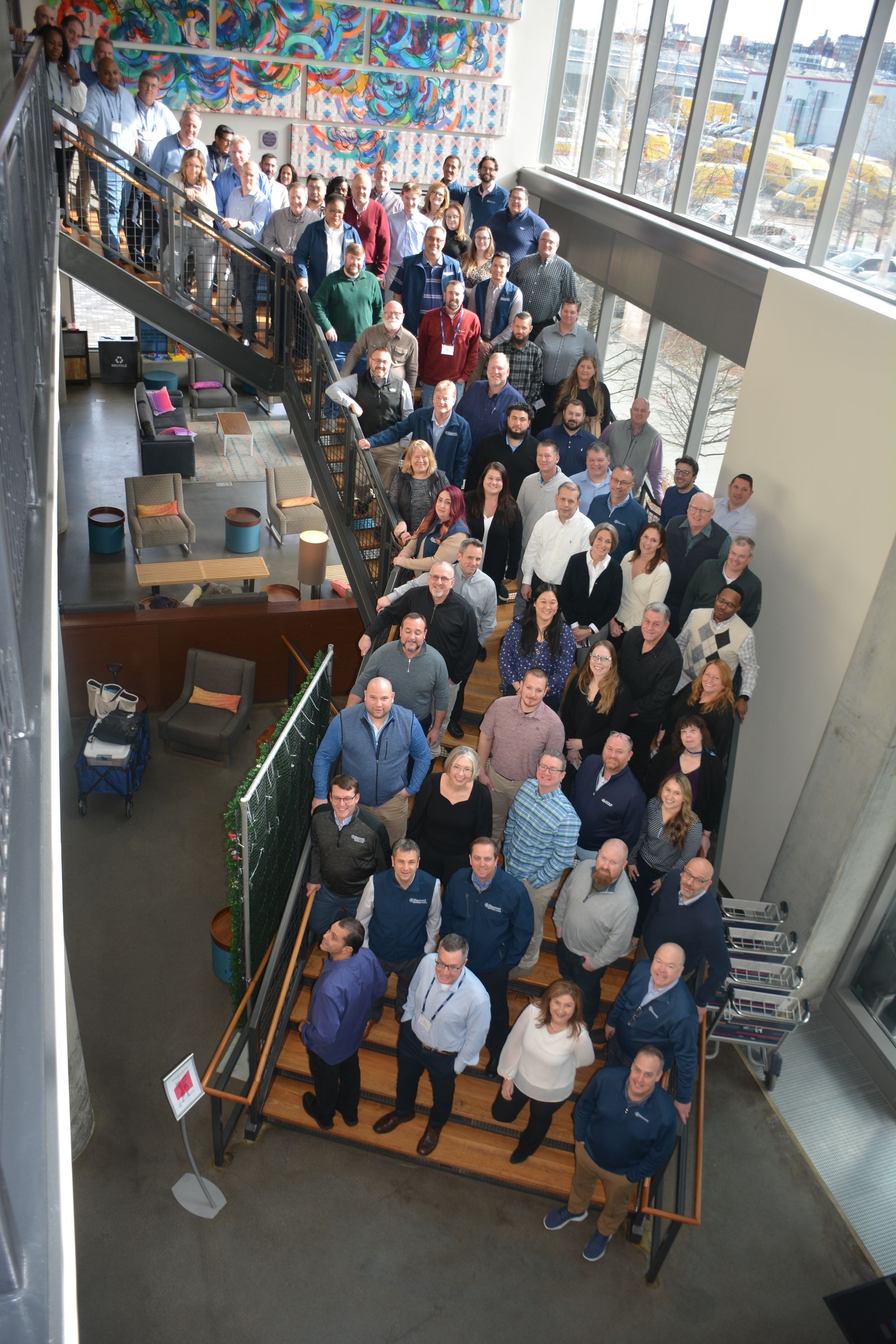
By Katherine Wroth
•
March 11, 2025
Franklin, MA – March 10, 2025— ������APP Distribution , a leading provider of third-party logistics (3PL) solutions, has been named one of Fulfill.com’s Top 50 U.S. 3PL Companies for 2025. Fulfill.com’s annual Top 50 3PLs list highlights the best logistics companies based on operational excellence, technological innovation and a proven track record of success. This recognition reflects ������APP’s decades-long commitment to delivering efficient, scalable and client-focused logistics services. “Being recognized as a Top 3PL Provider by Fulfill.com is a testament to our team’s relentless focus on service excellence and passion,” said Bryan Corbett , Vice President of Sales and Marketing. “We take pride in delivering personalized, efficient logistics solutions that drive success for our clients, and we are honored to be named a Top 50 3PL.” ������APP’s expansive fulfillment network covers over 7 million square feet across 25+ facilities, with key hubs in Boston, New Jersey, New York, Baltimore, Memphis, Dallas and California. This nationwide presence ensures fast logistics solutions tailored to high-growth brands. Joe Spisak , CEO of Fulfill.com, commented on ������APP Distribution Centers' inclusion in the Top 50 U.S. 3PL Companies for 2025: "������APP Distribution Centers exemplifies the precision, scalability and innovation we look for in our Top 50 US 3PL Companies. Their ability to deliver tailored logistics solutions—whether for direct-to-consumer e-commerce, omnichannel fulfillment or complex B2B distribution—sets them apart in the industry. With over 80 years of experience and a proven commitment to operational excellence, ������APP continues to be a trusted partner for brands looking for reliable, technology-driven supply chain solutions." About Fullfill.com Fulfill.com is a matchmaking marketplace connecting companies with the highest-rated 3PLs. Built to simplify the RFP process and ensure brands partner with the best 3PL for their specific needs, Fulfill (Fulfill.com) is bringing scale to both 3PLs *and* the companies they service. About ������APP Since 1941, ������APP has provided customized third-party logistics (3PL), direct-to-consumer (DTC) eCommerce fulfillment, omnichannel distribution, managed transportation solutions and retail compliance for clients across all industries, with a focus on apparel & footwear, health & beauty, consumer packaged goods (CPG) and education. ������APP continues to be a leading 3rd party logistics provider in North America, known for superior execution, customer engagement, and direct access to senior leadership decision-makers. As a member of Inc.'s fastest growing companies list 15 times, ������APP is big enough to do the job and still small enough to deeply care about your business. eCommerce brands interested in a new 3PL partnership may contact ������APP directly here . Contact Information Katherine Wroth Marketing Manager katherine.wroth@barrettdistribution.com Official Release Here

By Katherine Wroth
•
February 25, 2025
Are you struggling to keep up with order fulfillment for your apparel brand? Or are you just beginning to explore third-party logistics to see if it aligns with your business goals? Either way, this guide is for you. Managing order fulfillment in the apparel industry—online or in physical stores—comes with many challenges. Warehousing, packing, shipping, logistics, returns, tracking and customs clearance require significant time and resources. With limited hours in the day, handling all these aspects yourself can quickly become overwhelming (and that’s probably why you’re here). Hiring additional staff may help, but it also increases operational expenses and can complicate supply chain efficiency. The Solution: Partnering with a Trusted 3PL ������APP Distribution specializes in handling logistics and fulfillment operations for top apparel retailers and manufacturers. Outsourcing fulfillment to a trusted 3PL partner like ������APP saves costs and enhances efficiency. This guide will break down the key benefits of working with a 3PL provider and how to choose the best one for your needs. Understanding 3PL in Apparel Fulfillment A 3PL provider manages your inventory’s storage, fulfillment and distribution. This includes warehousing, order picking, packing and shipping. Many 3PLs also handle customer service and returns. Why should you outsource apparel fulfillment instead of managing it in-house? Cost Efficiency – You pay only for processed orders instead of maintaining a full-time logistics team. Improved Fulfillment Processes – Faster, more reliable order fulfillment enhances customer satisfaction. Let’s explore how 3PLs work and why they are game-changers for apparel businesses like yours. How Does a 3PL Work? While 3PL services can support a wide range of industries, here’s how they work specifically for apparel brands: Step 1: Choosing a 3PL Partner Selecting the right 3PL is a critical process. The provider you choose will integrate into your operations and support your long-term growth. Keep in mind that 3PL services differ from freight forwarding or on-demand warehousing. Understanding these differences will help you make a more informed decision. Step 2: Sending Your Inventory Once you’ve chosen a 3PL provider, you’ll send them your inventory for warehousing. This ensures order fulfillment begins as soon as a customer makes a purchase. Step 3: Storing Inventory Your 3PL partner will store your inventory in strategically located warehouses for easy retrieval and shipping. This optimizes fulfillment speed and reduces delivery times. Step 4: Order Picking and Packing When a customer places an order, the fulfillment process begins. The item ordered is retrieved from storage, packed securely and prepared for shipping. Depending on your provider, this process may be managed manually or with advanced inventory software for greater speed and accuracy. Step 5: Shipping After an order is packed, it is shipped to the customer. Some 3PL providers handle shipping directly, while others partner with major carriers. Confirming your 3PL’s shipping capabilities is important before signing a contract. Step 6: Handling Returns Returns are an inevitable part of e-commerce. Many 3PL providers offer reverse logistics solutions to manage returns efficiently and maintain customer satisfaction. Benefits of Using ������APP Distribution for Apparel Fulfillment Is investing in a 3PL the right move for your business? The answer is YES. Here’s why: 1. Increased Efficiency Managing an apparel business requires focusing on design, marketing and customer engagement. Offloading logistics allows you to concentrate on these core areas without being bogged down by operational details. 2. Cost Savings Maintaining warehouses, shipping fleets and logistics infrastructure can be expensive. ������APP reduces these costs by leveraging existing infrastructure and volume discounts on shipping. Minimizing shipping errors and optimizing order fulfillment can also help reduce costly mistakes and returns. 3. Scalability As your business grows, so do your logistics needs. ������APP currently operates 25+ facilities across the United States. With over 6 million square feet of space specifically designed for warehousing, distribution, transportation and omnichannel eCommerce fulfillment, ������APP will scale your brand to ensure success. ������APP has over 80+ years of 3PL expertise and the resources to scale operations up or down based on demand, allowing you to expand without significant overhead costs. When Should You Consider a 3PL? Not every business needs a 3PL, but if any of the following apply, it may be time to explore outsourcing your logistics: You’re fulfilling 10+ orders per day – Managing fulfillment in-house may become too time-consuming and costly. You’re expanding and scaling operations – A 3PL can simplify shipping and customs management. You need faster shipping options – Two-day shipping has become an industry standard, and ������APP has the infrastructure to meet these expectations efficiently. Choosing the Right 3PL for Your Apparel Business Not all 3PLs are created equally. Some offer broad logistics solutions, while others, like ������APP, specialize in apparel and fashion fulfillment. When evaluating providers, consider: Technology Integration – Ensure the 3PL can integrate with your e-commerce platform for real-time inventory tracking and order processing. Warehouse Locations – Choose a provider with fulfillment centers close to your customer base to reduce shipping times and costs. Scalability – The 3PL should be able to accommodate your business growth. Return Management – A provider with strong reverse logistics capabilities will improve your customer experience. ������APP Distribution: Your Trusted 3PL Partner Since 1941 Are you looking for a trusted 3PL partner for your apparel business? ������APP offers personalized fulfillment solutions designed to help you scale and succeed. Contact us today to receive a complimentary supply chain consultation.
© 2025
All Rights Reserved | ������APP Distribution Centers


